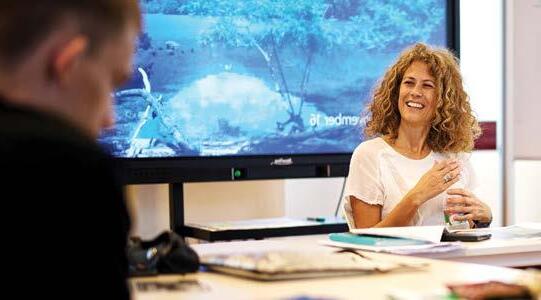
3 minute read
Get to know the Spanish state school system
There are four phases to the school system in Spain, below is an explanation of how it is structured:
● Educacion Infantil (Preschool) - 3 to 5 years of age (inclusive, i.e. three years). This is optional.
● Educacion Primaria (Primary Education) - 6 to 11 years of age (six years). Compulsory.
● Educacion Secundaria Obligitoria or ESO (Compulsory Secondary Education) - 12 to 15 years of age (four years).
● Bachillerato (Post-Compulsory Schooling) - 16 and 17 years of age (two years).
The Pre-school stage (infantil or popularly known as pre-escolar) is free for all children but not compulsory.
However, it is regarded as an integral part of the education system with infants’ classes at almost every primary school.
There are some separate nursery schools, colegios infantiles, also.
The next two phases, primary (colegio) and secondary school (instituto) education are compulsory and free of charge.
At the end of the ESO successful pupils are awarded a Secondary Education Certificate, which is necessary to enter the post-compulsory stage of schooling for their university or vocational studies.
Alternatively they may leave school and get a job.
Once pupils have their Bachillerato they can take their university entrance exam.
The primary decision
primary schools throughout Europe are more or less comparable. Around 80% of expats send their children to the local state schools –called ‘colegios’ for primary schools and ‘institutos’ for secondary schools.
There are two serious advantages to Spanish schools. The first is that children will learn Spanish fast and should integrate well into their new home country. Younger children, in general, thrive in state schools, with youngsters under nine normally picking up impressive spoken Spanish (usually, far better than their parents) within a year, just by socialising with their new friends.
The second key advantage is that state schooling is free of charge from the age of three, when children can begin attending infantile or ‘pre-escolar’, equivalent to a nursery in the UK.
The only costs you’ll have to cover are books, school trips and, if the school has them, uniforms. There are, however, downsides to state schools, particularly if your child is older or more timid.
Older children with limited Spanish can often have trouble adjust- ing, finding the move to a different country, combined with schooling in a tricky language, way too much to cope with.


Learning history and physics in a foreign language isn’t for the faint hearted!
“It is fine if you get the kids in at a young age, but if they are nine or 10 then they will find it harder,” advised one English parent, whose two children have been through the local system in Marbella.
Tips for choosing a new school
● Ignore the glossy brochures - go to the school and see for yourself
● Meet the head, meet the teachers, and meet the students
● Look at the exam results
“They will almost certainly need some extra tuition and it also helps if the parents get involved in the school and try to get to know the other Spanish parents. Joining the parents/teachers association certainly helps.”
If you decide against the state system, either because you fear the standards will be low (according to reports, Andalucia does indeed come well below average), or because you prefer to have your children educated in their native language, then your best choice is to go private.
Going private
● Find out about opening or taster days
● If the students seem happy, chances are your child will be happy too
● Be clear about what you want from a school - do lots of research
Budget is usually the main consideration but many expat parents find that choosing an international school gives their child a gentler introduction to a foreign country, with much smaller class sizes and with teaching in English, German, Swedish or French.
Many international schools follow the basic UK curriculum, with GCSE and A-levels, with a number of local schools regularly getting kids into the top British universities, including Oxbridge, Manchester, Edinburgh and London. Others cater for the American, French and Swedish systems too. International schools have very different personalities and philosophies, and it’s very much a matter of personal preference.
But with more than two dozen on the Costa del Sol alone, there are more than enough to choose from.
Marbella – with more than 50,000 foreigners – has the largest concentration of international schools, after Madrid and Barcelona, with well over a dozen.
Malaga city, Mijas, Fuengirola, Benalmadena, Estepona, Almunecar and Sotogrande all have their own options.
The rise of international schools in Spain can be traced back to former dictator General Franco, who introduced tourism to the Costa del Sol.
Since then, a torrent of foreign visitors settling along the coast has turned it into a melting pot of cultures, providing endless opportunities for education start-ups.
A great advantage for many parents is that international schools often have a more multicultural environment than state schools, with most having more than 20 nationalities attending and offering a bilingual study programme.
To tie in with this, many of the top schools offer the International Baccalaureate (IB) programme, as well as the local secondary school qualification, the Bachillerato.
The IB – which may be unknown to some English readers – is the normal route to university for European students.
Of course the option remains for A levels, as





